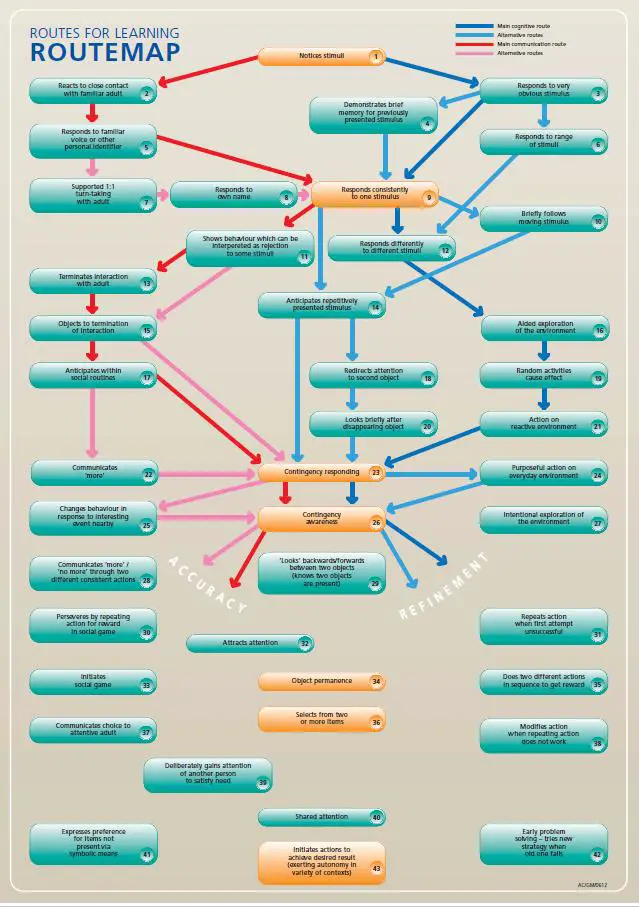Assessment for PMLD
Rethinking Assessment for PMLD learners. In 2015, Cherry Garden School decided their assessment and reporting procedures were no longer fit for purpose. Although we had just received our third consecutive Outstanding judgement from Ofsted, we were aware that our assessment ‘data‘ wasn’t always meaningful, and that many of our children didn’t make typical linear progress. We were also aware that talk of percentages and P Scales often went over our parent’s heads (and realistically a lot of our staff’s).
At Cherry Garden School we used Routes for Learning as our assessment system for children with PMLD. It felt that this was an ‘add on’ and not necessarily at the heart of our assessment processes for those children. We liked the flexibility of the document and that a child’s progress didn’t necessarily need to follow a designated path. We wanted the stepping stones from ‘Routes’ to form the foundations of whatever tool we came up with.

A New Concept of Assessment for PMLD learners
The concept we came up with for reporting progress to parents was that of a cherry tree. The cherry tree could grow with a child through their time at school. When a child secured understanding, a leaf would appear on their tree. This gave us a structure of branches through which to organise milestones that you may expect to find in a very young typically developing child. We were aware that the tree model assumed a level of linear progress that didn’t suit all of our children, so we decided that children working in the first four branches would have an alternative representation. This would be a cherry blossom, where petals grew with achievements and deepened in colour with generalisation.

Over the following three years the teaching and leadership teams at Cherry Garden spent huge amounts of time compiling six main Branch Maps (linked to our curriculum areas). Once written these maps were analysed and tweaked in teacher and whole school meetings to ensure that they were fit for purpose, and catered for the needs of all children at the school.
A learning Journey Approach to Assessment for PMLD
It was at this stage that we approached Tapestry to see if they could bring our graphical ideas to life. The ‘Learning Journey’ approach was an element that we wanted to incorporate. The purpose of this is so that parents could see photos and videos of achievements. Tapestry were the obvious team to approach as we knew from experience that they had an existing high quality product. They agreed and set to work on producing an attractive interface that parents and children could interact with to see evidence of learning and progress.

It was never our initial intention to share the Branch Maps with other settings. As the process was taking place, it became clear that many schools and nurseries in our local area were also on the lookout for something new. In particular, we found that many local Early Years settings were looking for a way of demonstrating progress for their children with additional needs. We have also developed supplementary branch maps such as this one for communication book users.

Regardless of whether other settings choose to go the Tapestry route or not, we are both in agreement that the Branch Maps should be freely available to anyone who may benefit from them. The graphical representations and evidence gathering aspects are very important to our school. We are aware that this isn’t necessarily the case for all settings. We hope that any setting deciding to make use of the maps will find them helpful in assessing children’s learning, as well as setting appropriate next steps.
For more information, and for free downloads please visit www.cherrygardenschool.co.uk/assessment follow Cherry Garden School on Twitter
For support in implementing Branch Maps in your setting please contact stephen@eyfs.info
About the author: Stephen Kilgour is Deputy Head teacher at Cherry Garden School in Peckham, London.







One Comment